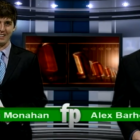Business & Economy
Environmental group finds toxic chemicals in university promotional items
|
By DARCIE MORAN
Capital News Service
LANSING — Michigan might be a divided house when it comes to college sports but the in-state rivalry might be more toxic than fans know. Both University of Michigan and Michigan State University fan gearcontained varying levels of potentially toxic chemicals, according to a recent study by the Ecology Center, an Ann Arbor-based nonprofit environmental organization. The study examined 65 products for 19 universities bought from prominent retail stores around the country, environmental health campaign director Rebecca Meuninck said. Most University of Michigan products were purchased from a Walgreens in Ann Arbor and most Michigan State University products were purchased from a Kroger in East Lansing. Other universities in the study included University of Wisconsin, University of North Carolina, Duke University and University of Connecticut.
